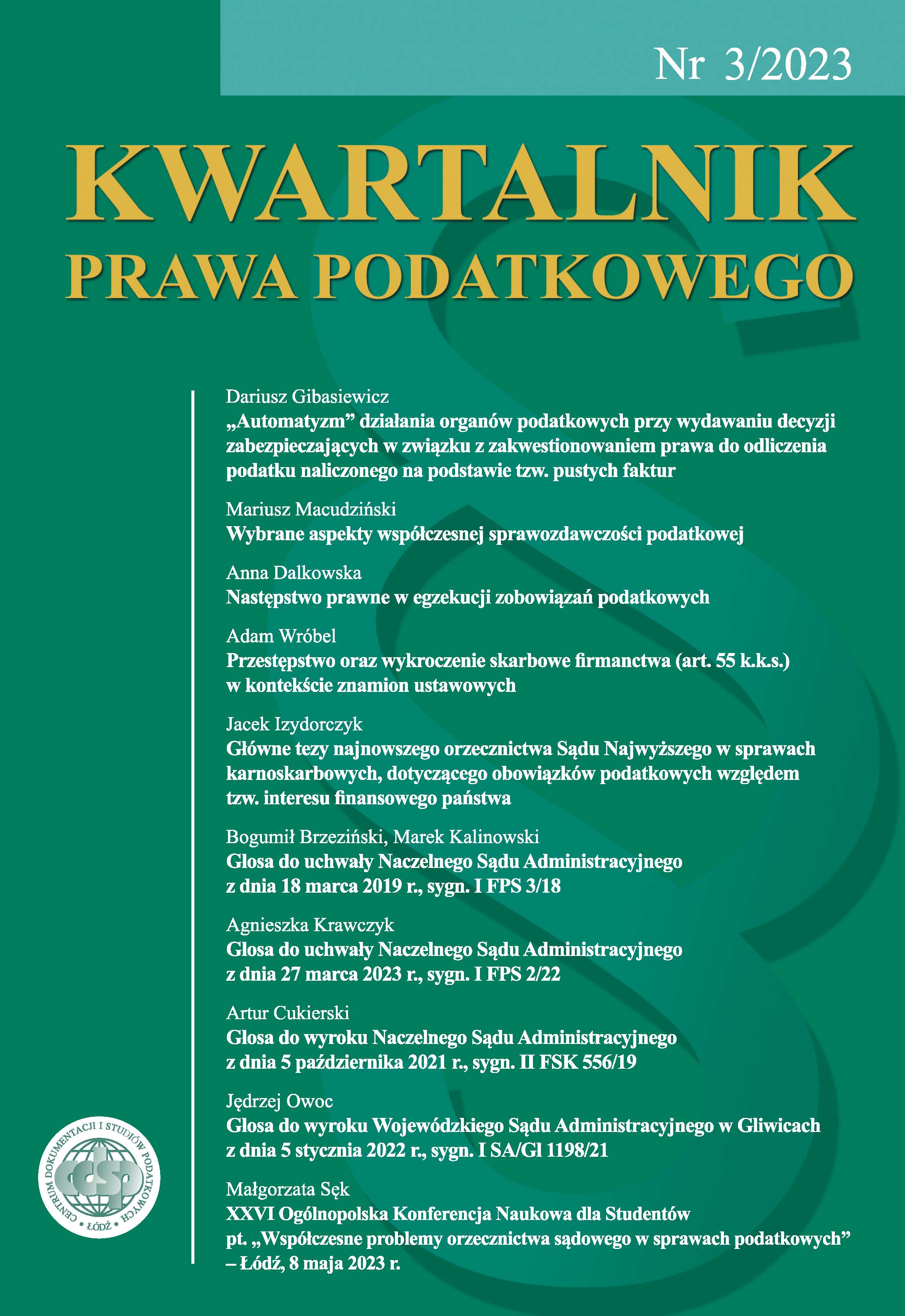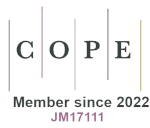Glosa do wyroku Naczelnego Sądu Administracyjnego z dnia 5 października 2021 r., sygn. II FSK 556/19
DOI:
https://doi.org/10.18778/1509-877X.2023.03.08Słowa kluczowe:
alternatywna spółka inwestycyjna, ASI, fundusz inwestycyjny, alternatywny fundusz inwestycyjny, AFIAbstrakt
Przedmiotem niniejszej glosy jest wyrok Naczelnego Sądu Administracyjnego z dnia 5 października 2021 r., sygn. II FSK 556/19, w którym rozpoznając skargę kasacyjną Dyrektora Krajowej Informacji Skarbowej od wyroku Wojewódzkiego Sądu Administracyjnego w Warszawie w przedmiocie podatku dochodowego od osób prawnych, Naczelny Sąd Administracyjny uchylił zaskarżony wyrok w całości, stwierdzając, że różnice pomiędzy funduszami inwestycyjnymi wprost wymienionymi w art. 3 ust. 1 i 4 ustawy z dnia 27 maja 2004 r. o funduszach inwestycyjnych i zarządzaniu alternatywnymi funduszami inwestycyjnymi oraz alternatywnymi spółkami inwestycyjnymi w rozumieniu art. 8a tej ustawy są jednak na tyle znaczne i istotne, że nie można przyjąć, iż alternatywne spółki inwestycyjne są funduszami inwestycyjnymi w rozumieniu omawianej ustawy. Jednocześnie przyznał, że nie każdy alternatywny fundusz inwestycyjny jest funduszem inwestycyjnym w rozumieniu ustawy o funduszach inwestycyjnych i zarządzaniu alternatywnymi funduszami inwestycyjnymi, a definicja funduszy inwestycyjnych, określając formy działania funduszy, posługuje się katalogiem zamkniętym, z którego wyłączono alternatywne spółki inwestycyjne. Tym samym zakwestionował prawo podatnika do skorzystania ze zwolnienia podatkowego określonego w art. 17 ust. 1e pkt 3 ustawy z dnia 15 lutego 1992 r. o podatku dochodowym od osób prawnych w przypadku lokowania dochodów w prawa uczestnictwa alternatywnej spółki inwestycyjnej.
Mimo pewnych niejasności w przepisach należy zaaprobować orzeczenie NSA. Biorąc pod uwagę, że w ustawie o funduszach inwestycyjnych wiążąco ustalono znaczenie pojęcia zarówno alternatywnej spółki inwestycyjnej, jak i funduszu inwestycyjnego, wprowadzając zarazem dychotomiczny podział pomiędzy tymi instytucjami wspólnego inwestowania, to zastosowanie wykładni językowej pozwala na jednoznaczne potwierdzenie braku możliwości zastosowania zwolnienia podatkowego określonego w art. 17 ust. 1e pkt 3 ustawy o podatku dochodowym od osób prawnych dla lokowania dochodów w prawa uczestnictwa alternatywnej spółki inwestycyjnej.
Pobrania
Bibliografia
Bielska-Brodziak A., Suska M., Węzeł gordyjski, czyli o in dubio pro tributario na tle klasyfikacji dyrektyw wykładni oraz pojęcia momentu interpretacyjnego, „Państwo i Prawo” 2020, nr 8.
Google Scholar
Brzeziński B., Prawo podatkowe. Zagadnienia teorii i praktyki, Toruń 2017.
Google Scholar
Gomułowicz A., Mączyński D., Podatki i prawo podatkowe, Warszawa 2022.
Google Scholar
Kmieć J., Komentarz do art. 1, [w:] Ustawa o funduszach inwestycyjnych. Komentarz. Tom I. Art. 1–157, red. A. Kidyba, Warszawa 2018.
Google Scholar
Matusiakiewicz Ł., Rozstrzyganie wątpliwości prawnych na korzyść podatnika, LEX/online.
Google Scholar
Popławski M., Komentarz do art. 2a, [w:] Ordynacja podatkowa. Tom I. Zobowiązania podatkowe. Art. 1–119zzk. Komentarz aktualizowany, red. L. Etel, LEX/el. 2023.
Google Scholar
Postrzech Ł., Zwolnienia przedmiotowe w podatku dochodowym od osób prawnych dochodów przeznaczonych na działalność preferowaną przez państwo, LEX/online.
Google Scholar
Zieliński M., Wykładnia prawa. Zasady – reguły – wskazówki, Warszawa 2017.
Google Scholar
Ziembiński Z., Problemy podstawowe prawoznawstwa, Warszawa 1980.
Google Scholar
Opublikowane
Jak cytować
Numer
Dział
Licencja

Utwór dostępny jest na licencji Creative Commons Uznanie autorstwa – Użycie niekomercyjne – Bez utworów zależnych 4.0 Międzynarodowe.
PlumX metrics









